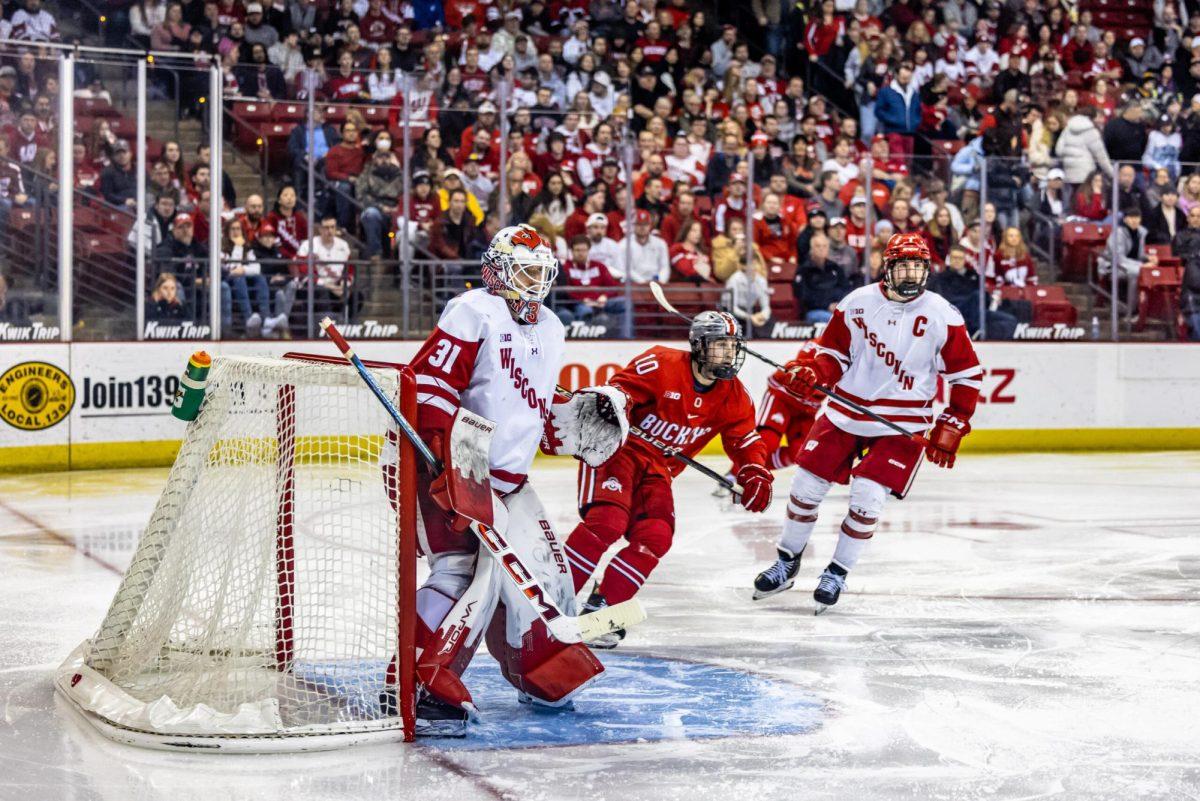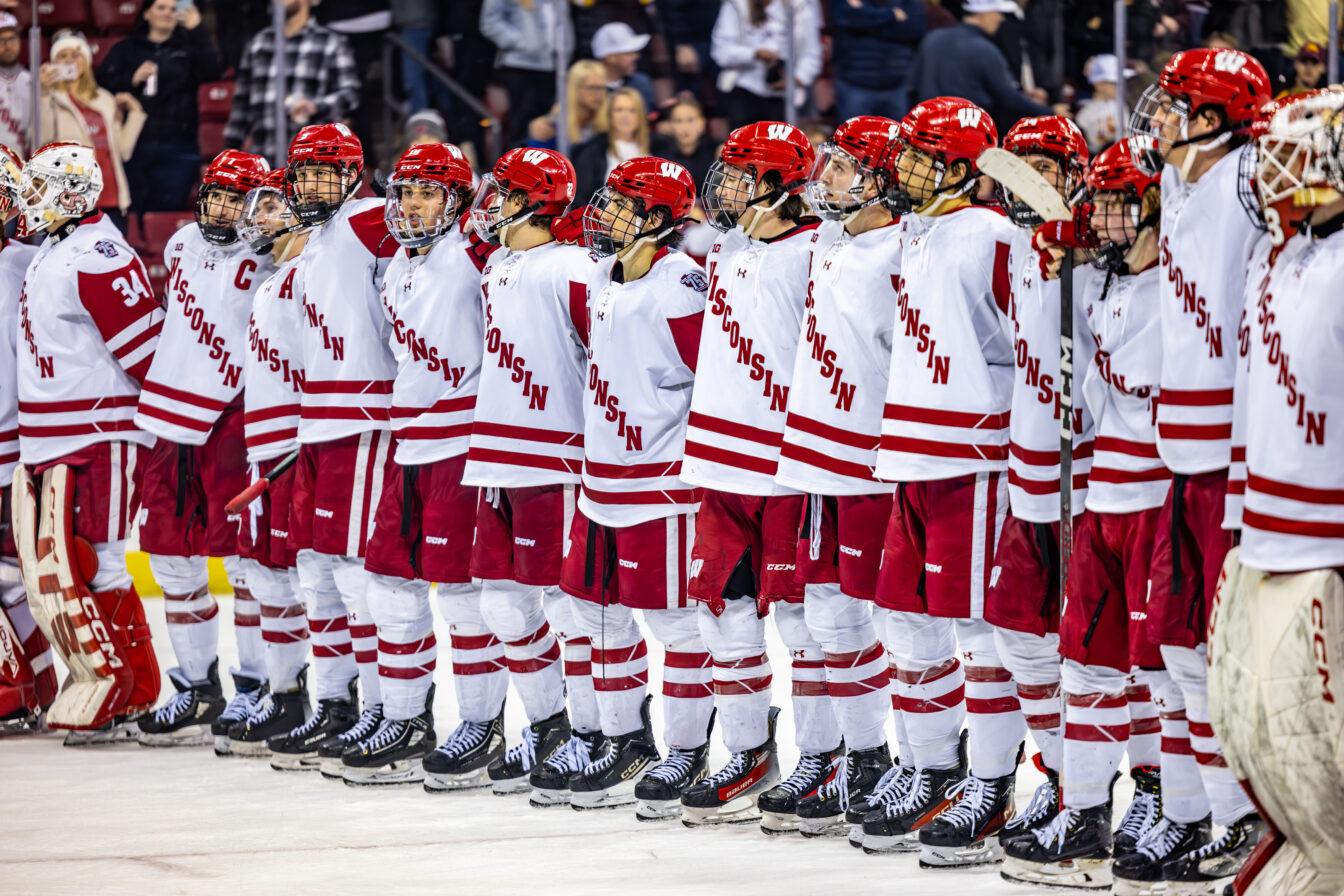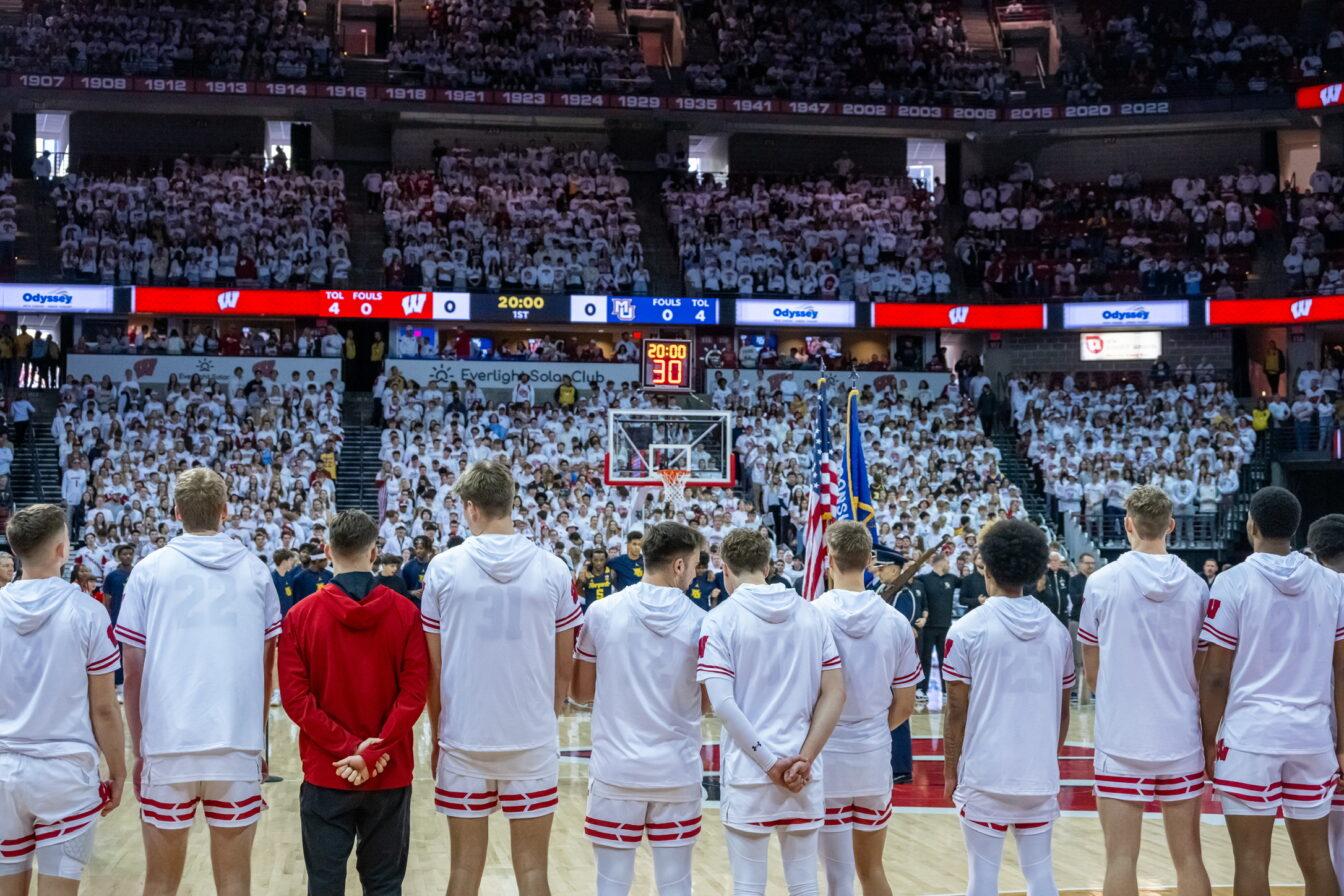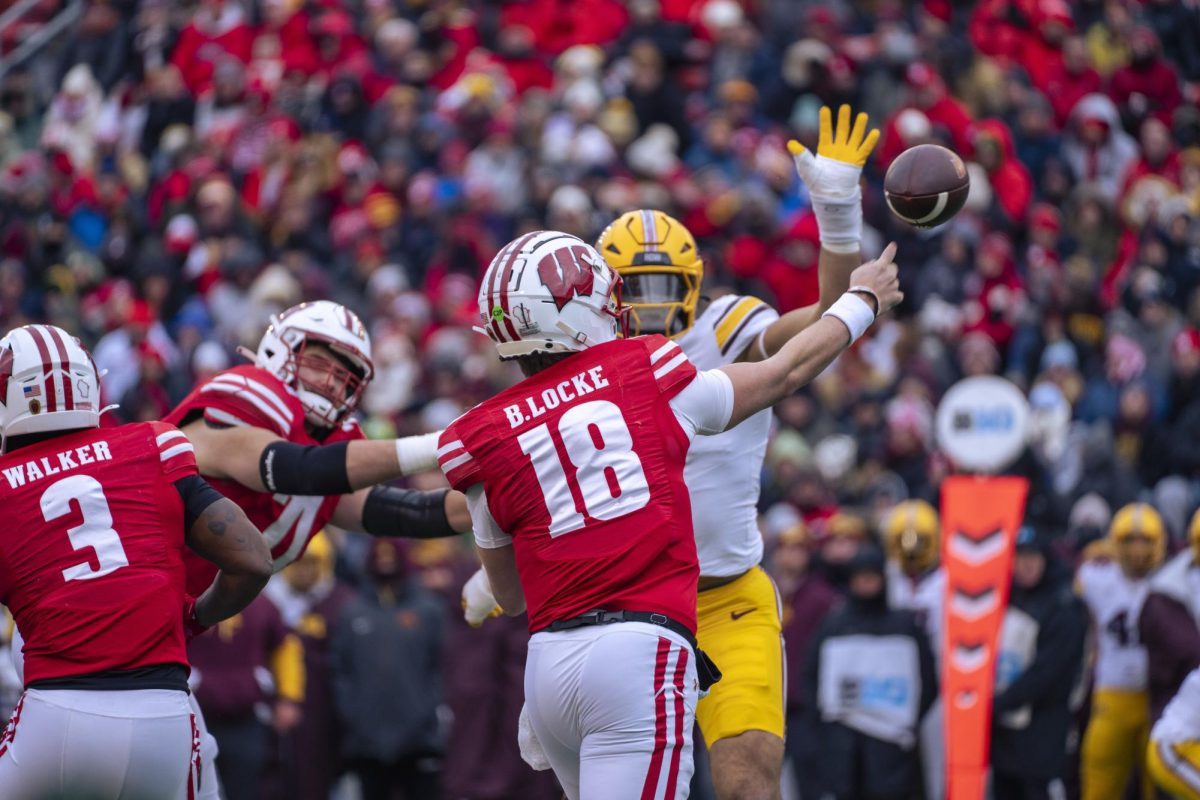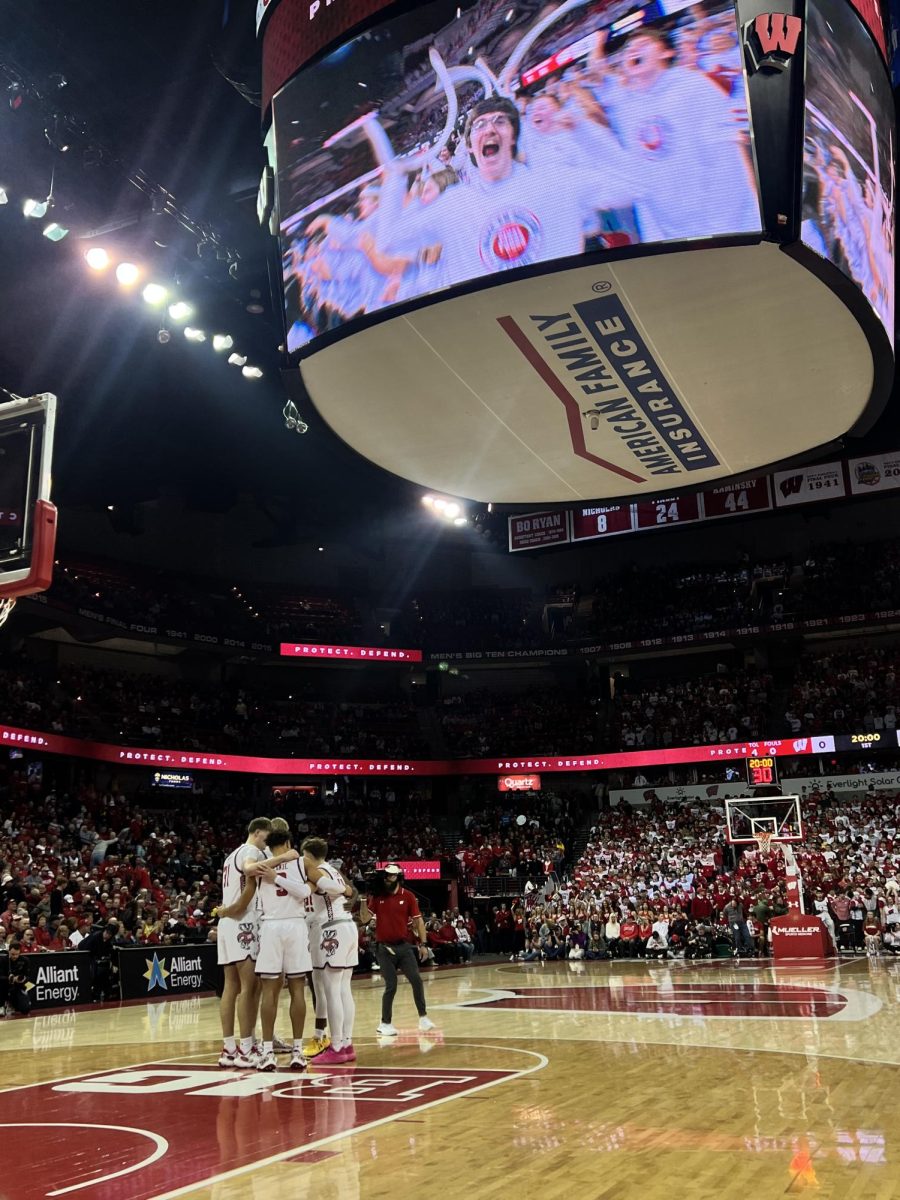
So as he sits at a table in his office and talks about the dirty work his job entails (recruiting), there’s a stark contrast between his work and where he works. He calls the recruiting board he and his coaching staff uses a “can of worms,” explaining how complicated and messy the process can be.
“Because you open that thing and you look at it – and you could spend all day in there,” Eaves said. “And after a while, you almost say, okay, it’s been an hour, we need to close this thing back up. Get all the worms back in there, take a break and step back. Things happen on their own, they evolve and you open it back up again, you get back in there.
“But it is an interesting beast.”
The beast reference was directed to the recruiting board. But it might as well apply to college hockey recruiting in general as well – a process constantly made more difficult when players leave early for the professional ranks.
Unlike college basketball or football, hockey players are not usually coming to programs straight from high school. Most NCAA hockey players have played at least a year or two of junior hockey, a catch-all term for various North American leagues that feature competition for 16- to 20-year-olds. The United States Hockey League is the only top-tier amateur junior league in the U.S., while there are several provincial leagues in Canada.
Twenty of the players on UW’s 2010-2011 roster played at least one year of junior hockey prior to joining the Badgers. Only three came to UW straight from Minnesota high schools, while the other three not to come from juniors or high school came from the U.S. National Team Development Program.
There’s both an advantage and a downfall to this system, however. On one hand, players can play junior hockey for a couple of years and grow bigger and stronger, which can be necessary since some NCAA hockey seniors can be up to 24 years old if they played juniors before college. It also allows a recruit to stay committed to a program even if there isn’t immediately a spot on the roster; coaches can essentially stash recruits by having them commit two or three years before they’re actually going to join the team, which also allows for flexibility to get the player on campus sooner or later, depending on need.
The downfall is, a team might lose a recruit to another school that has a more immediate opening. Or maybe he decides to play major junior in Canada instead. And depending on if players leave a program early or stay longer than projected, there sometimes isn’t always scholarship money to go around.
“We always talk about plan A, B and C. And D is probably worst-case scenario: What happens if we lose all these kids? We have to talk about those things now,” Eaves said. “Well plan A, if he leaves, who gets his money and can we frontload him or backload him? It makes our job – instead of juggling three balls, we’re trying to keep four or five up in the air. And it makes it a lot more difficult because of that.”
This also means teams can’t always go after the top recruits, because a coaching staff must try to project how long a given kid will stay. Sometimes a team needs to sacrifice talent for a four-year commitment. Whether it’s an undersized kid or someone who hasn’t grown into his frame yet, or even someone with good character, Eaves and his staff are mixing and matching proverbial blue-chip prospects with what he referred to as some red- or white-chip prospects as well.
A shining example of the pitfalls of recruiting top talent is Don Lucia’s program at Minnesota. The Gophers won back-to-back titles in 2002 and 2003. From 2001 through 2007, UM finished no worse than fourth in the WCHA. Then came the effects of the new NHL collective bargaining agreement in 2005. From 2008-2011, the Gophers finished fifth twice and seventh twice. Minnesota has missed the NCAA tournament the past three seasons, after missing it just three times between 1985-2007. All despite rosters that have regularly featured between 10 and 20 NHL draft picks.
The Gophers have lost 19 underclassmen since 2003, including five
players who went one-and-done. From 2006-2008, Minnesota saw 11
underclassmen leave early for the pros. It goes to show that experience and chemistry, something that isn’t always as strong when players are always leaving, is a big part of the equation.
But that doesn’t stop the hunt for those sure-thing NHL prospects, either.
“You’re still going to need talented people to win. That’s one thing that you learn early as a coach, you don’t turn a tortoise into a hare,” Eaves said. “If you’re going to go to a championship game and you’ve got Bus A and Bus B, and Bus A has more talent than Bus B, you’re going to go with Bus A.
“That’s the simplest form of that. We’re going to need talented people. We’re going to need those guys that have magic, the things that you don’t teach, that can make something out of nothing.”
Added to the fact is most of these kids are 15 or 16 years old, and coaches need to try to recruit them before they can decide to play major junior, all the while trying to project how the player will be when he’s actually on campus. How much bigger or stronger will the player get? Will he be the same or better four years from now?
And as financial dealings get tougher around the NHL, the pressure to fill around stars with cheap, young prospects is affecting more schools than ever before.
Boston College head coach Jerry York gained a reputation for recruiting small, speedy forwards considered undersized by NHL standards. Because they aren’t being pursued by pro teams, they tend to stay for four years. And it has worked, as BC made the 2006, 2007, 2008 and 2010 national title games, winning in 2010.
But even for York, that’s beginning to change. BC has lost three players to early departure this offseason alone, matching its total from 2003-2010. York called Eaves to ask his advice on the matter.
“Now [York is] saying, ‘How are you doing it?’ He’s never had to do that before because his recruiting has kind of been, he was always trying to get four-year guys, guys who were going to stay, smaller guys that maybe weren’t NHL guys,” Eaves said. “He’s dealing with that for the first time. I said to Jerry, ‘Jerry, it is a gray area. I don’t have definitive answers for you.'”
Check back Tuesday for the final part in this five-part series.



